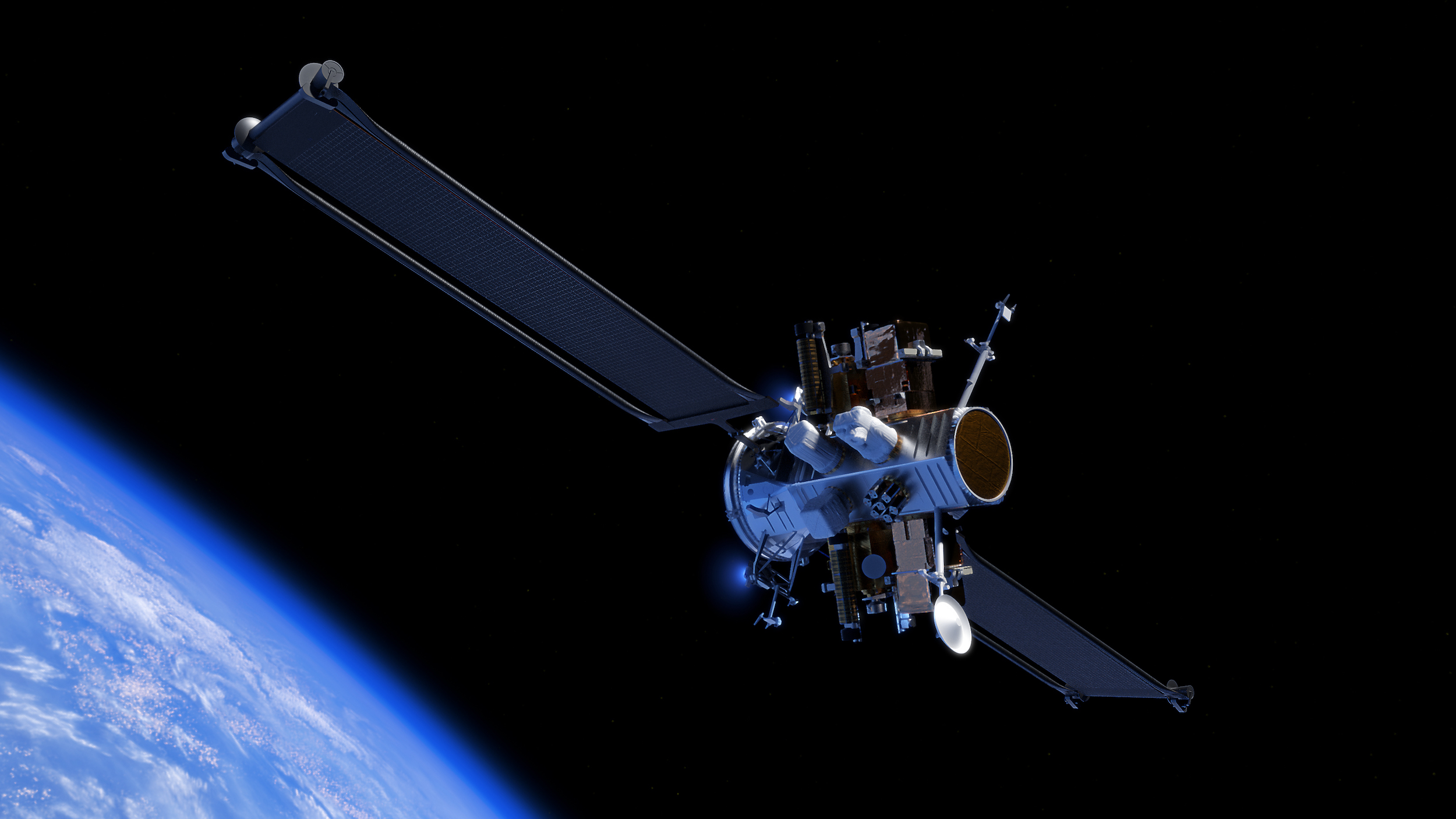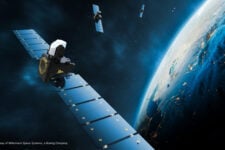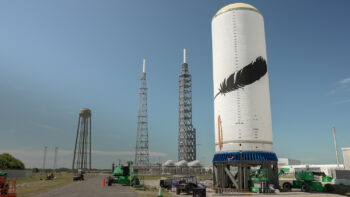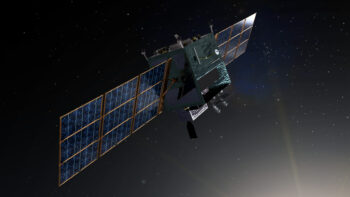
Blue Origin in October revealed a new spacecraft design, called Blue Ring, to provide in-space logistics and delivery. (Photo credit: Blue Origin)
ORLANDO — Amid growing demand from US military commands for capabilities that will allow satellites greater maneuverability and longer on-orbit lifetimes, DoD and industry officials are pointing to each other to spark a profitable market for the new technologies required.
“From a military perspective, when we talk about commercial and the space economy, what we’re really doing is attempting to take advantage of the pursuit of the space economy without having to be the anchor tenant for all of those things,” Lt. Col. Leon Killings, deputy director of the Space Force’s Servicing, Mobility and Logistics program, told a panel at the annual SpaceCom conference here on Wednesday.
However, industry officials see the Defense Department, primarily via the Space Force, as the primary customer whose requirements and needs are driving innovation but also financially sustain the “nascent” commercial market.
Indeed, Lauren Smith, Northrop Grumman’s program manager for in-space refueling, told the same panel that the Space Force is the “anchor tenet,” at least for the moment. Further, she urged the service to come forward with more defined “requirements” to help industry target its own investments in technologies to enable dynamic space operations, such as on-orbit refueling, systems to provide power to becalmed satellites and other types of servicing to fix broken spacecraft.
Lars Hoffman, Blue Origin’s vice president of national security sales, echoed that a real commercial market “doesn’t exist right now.” Instead, he said, this is a “transition period” in which “new and untested” capabilities are emerging but have yet to be fully adopted by potential users.
In particular, industry is looking for more, and more sustained, DoD funding to help propel technologies out of the early research and development stage, explained Lexie Weikert, government solutions specialist at Astroscale US.
Killings, for his part, said that while he understands industry’s need for more government resources to help ensure that companies can see a potential return on their investments, he fretted that if the Space Force sets hard requirements too early it would be giving industry a “point solution” that may mitigate against the development of diverse capabilities that might, in the end, be better fit for purpose.
Smith, while acknowledging that risk, argued that industry needs better direction to help it to focus on the military’s priorities.
“I think the question is how fast does the government want to get to a solution that is an operational solution,” she said. “We have to start somewhere.”
Where the panelists all agreed is about the need for improved government-industry communication in order to strike “a balance” of early investment tech development to create a “hybrid” approach to building a stable in-space economy for the future.
They also concurred that more government resources are needed to make the rapid progress on space mobility and logistics desired by US Space Command, Indo-Pacific Command and other regional commands — something that Killingly said already has been recognized by Space Force leadership.
NRO should concentrate on bigger, badder ‘tripwire’ ISR birds, new report urges
Meanwhile, the report says, the Space Force should be in charge of pursuing large networks of small satellites under the Space Development Agency’s Proliferated Warfighter Space Architecture (PWSA) — differentiating its “tactical ISR” job from the “strategic” mission of NRO.


























